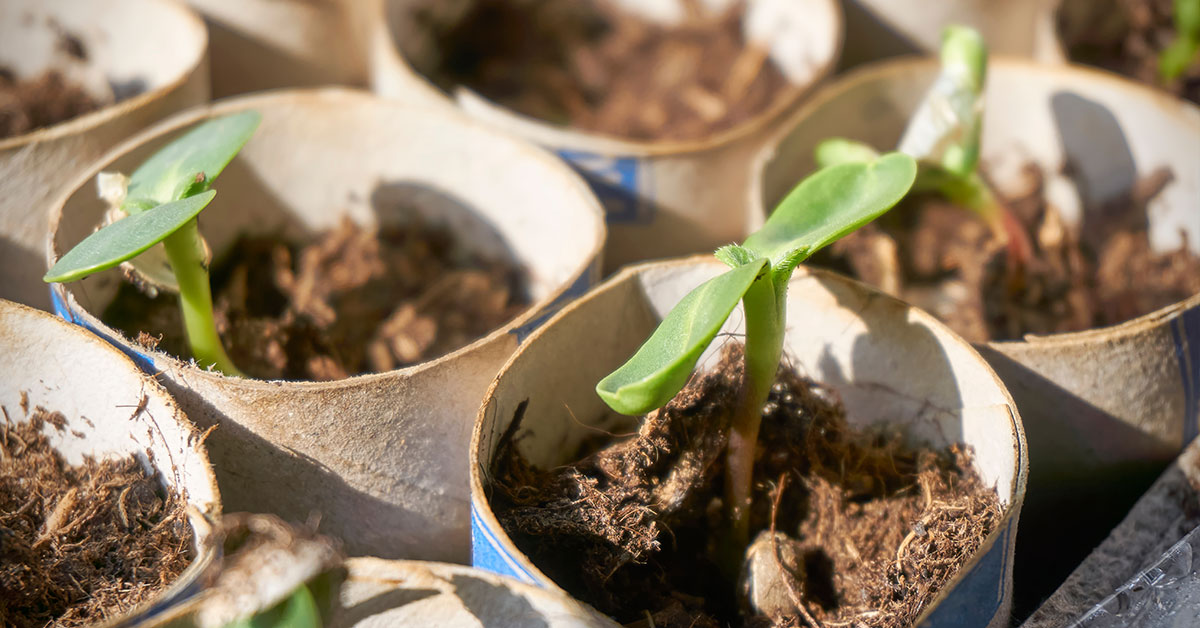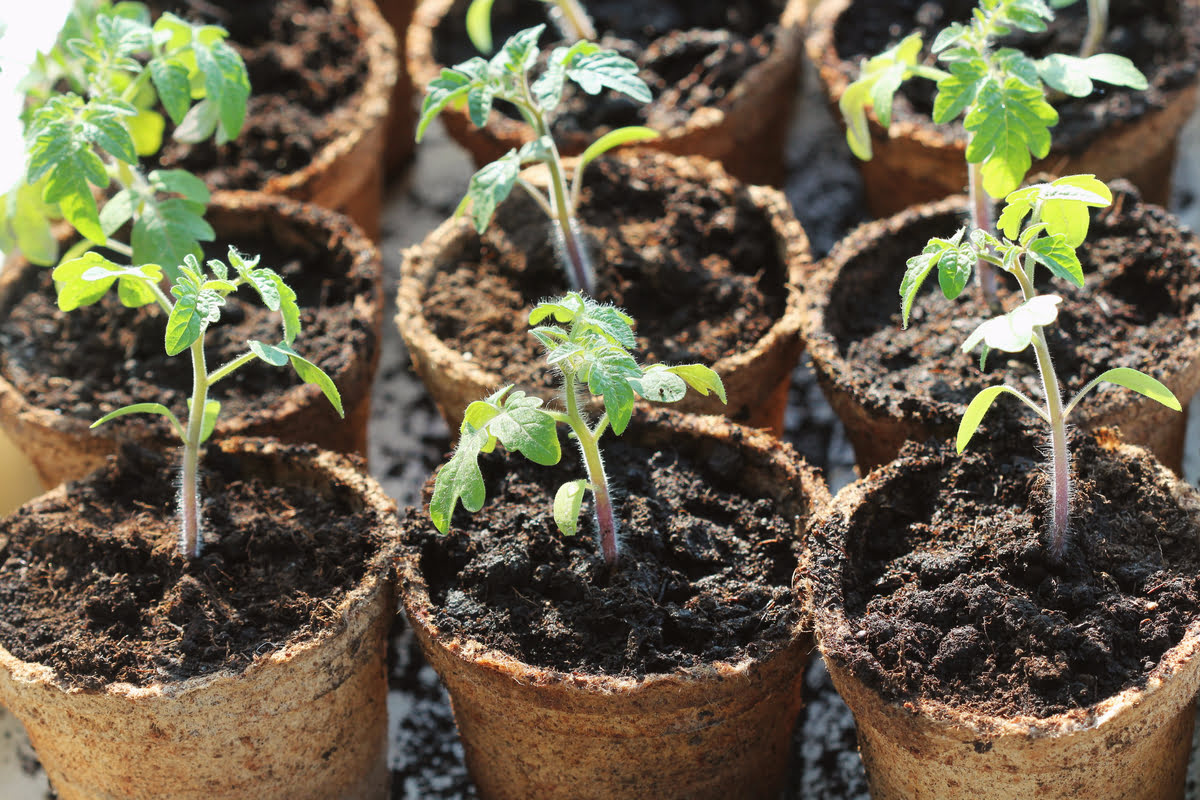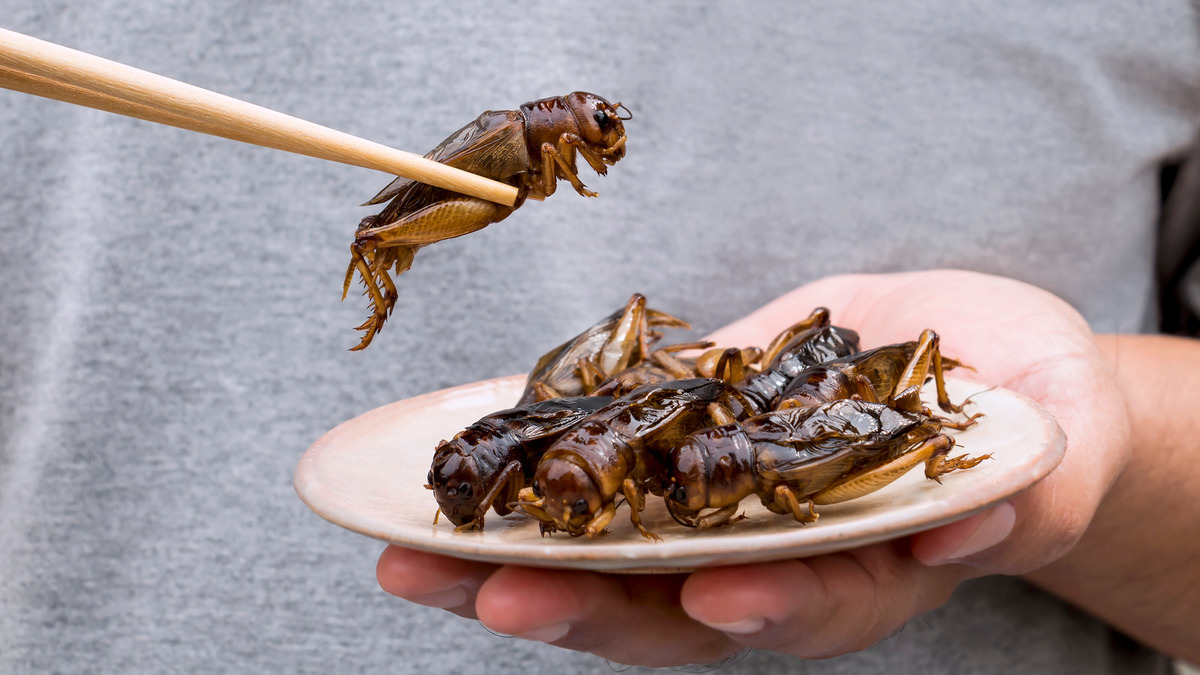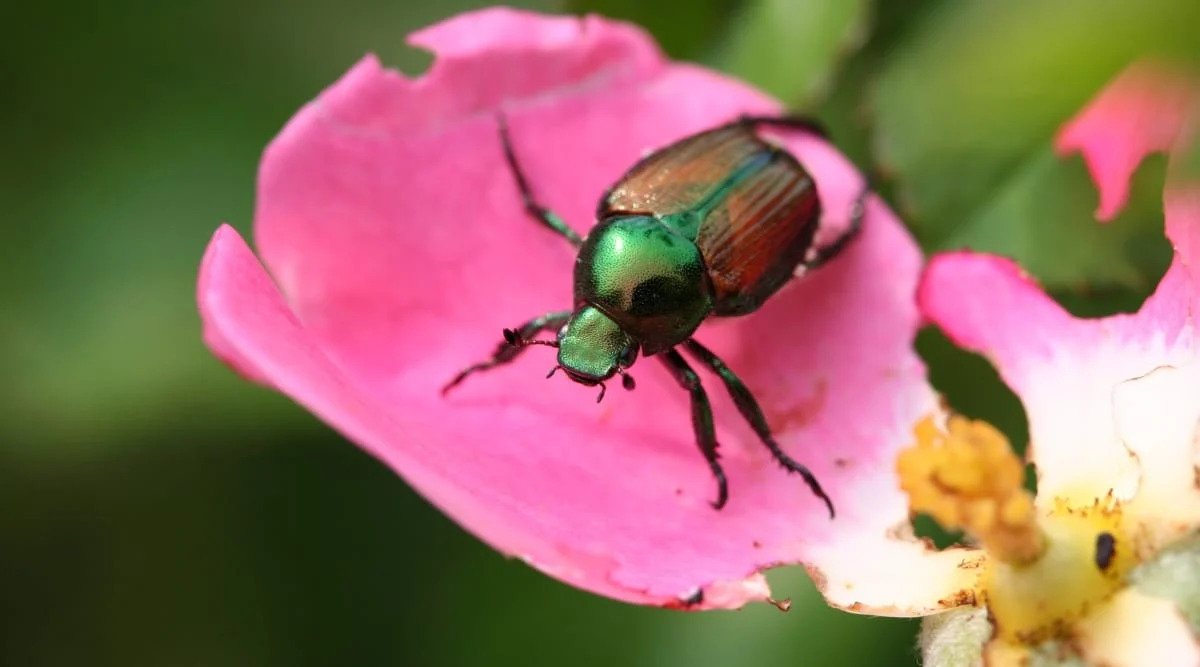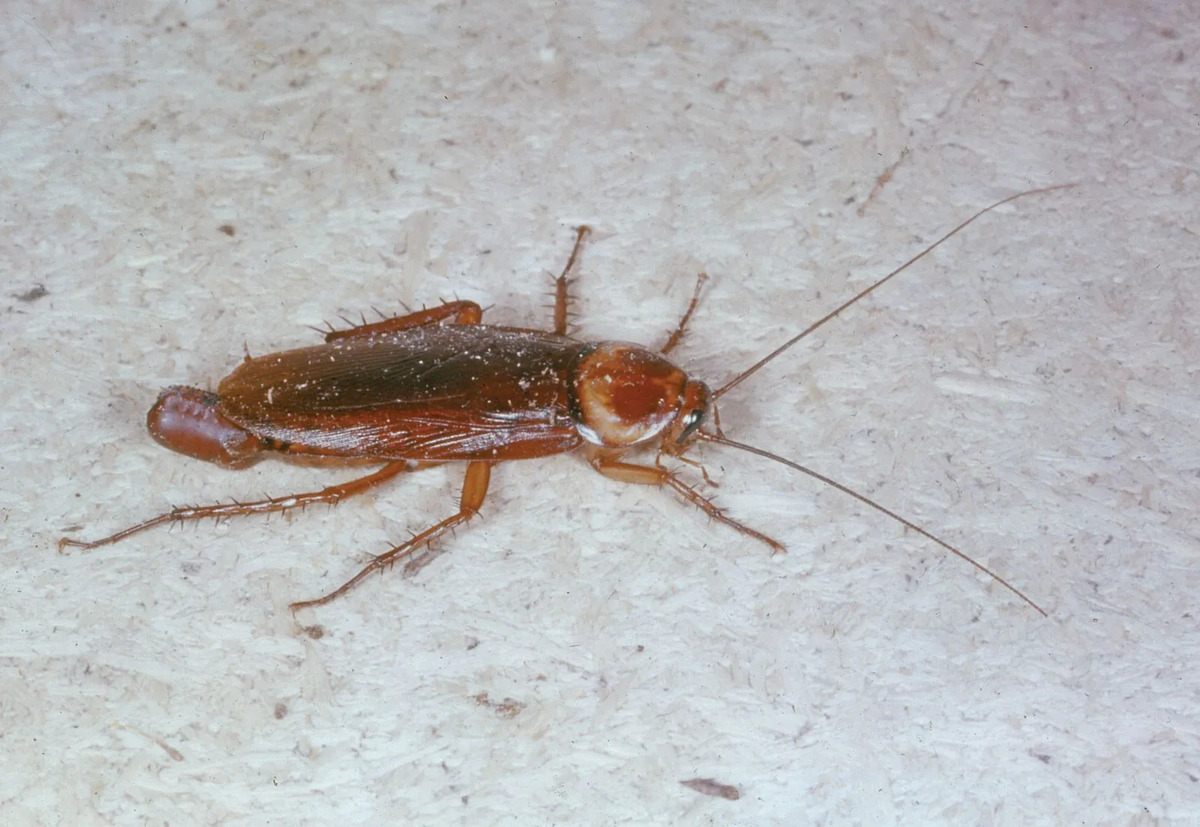Home>Types of Gardening>Edible Gardening>What Is Eating My Seedlings
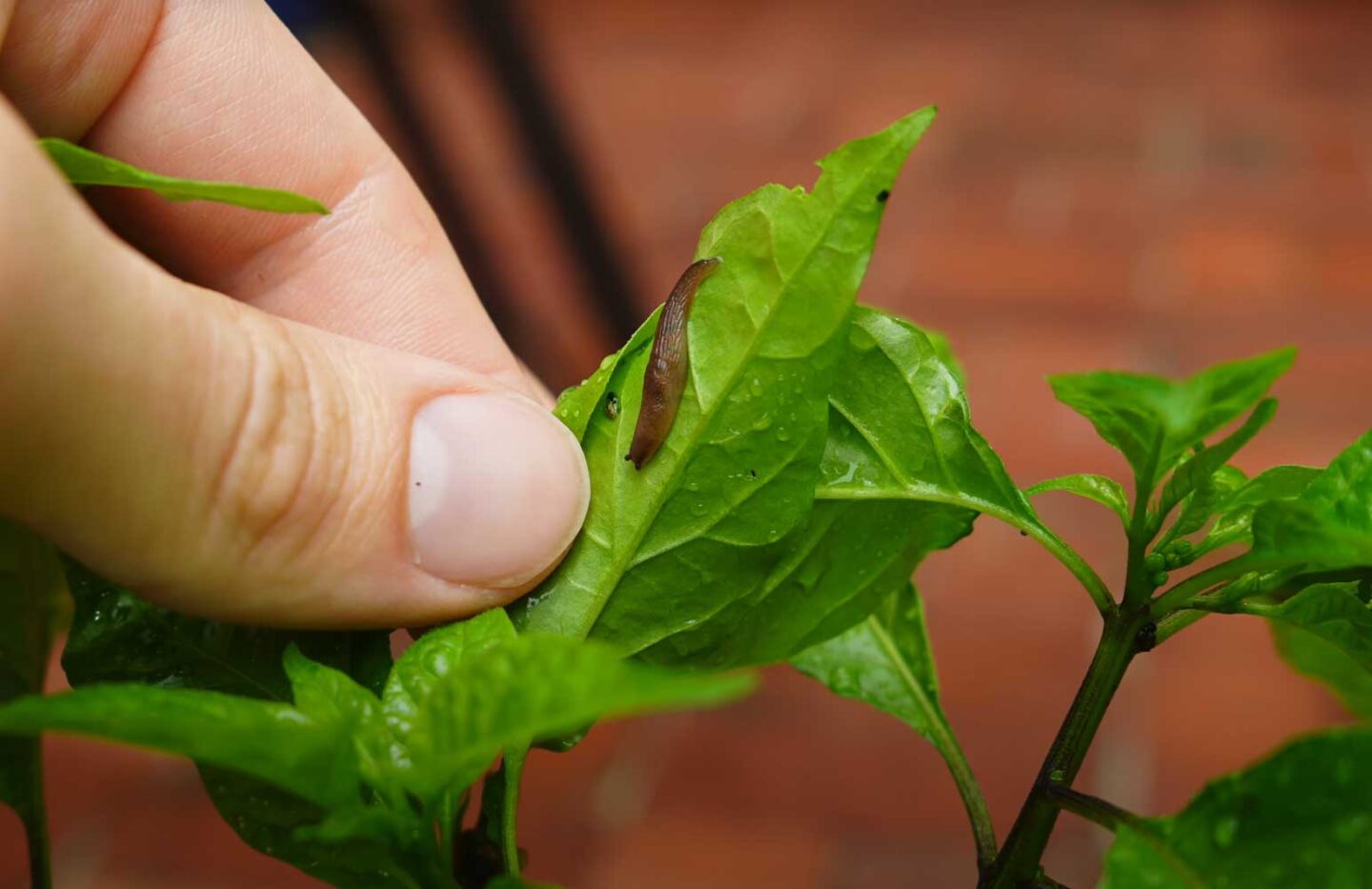

Edible Gardening
What Is Eating My Seedlings
Published: January 3, 2024
Learn how to identify and stop the pests that are eating your seedlings in your edible gardening journey. Protect your plants and ensure a successful harvest.
(Many of the links in this article redirect to a specific reviewed product. Your purchase of these products through affiliate links helps to generate commission for Chicagolandgardening.com, at no extra cost. Learn more)
Table of Contents
Introduction
Welcome to the wonderful world of edible gardening! If you’ve embarked on the journey of growing your own fruits, vegetables, and herbs, you’re already taking steps towards a healthier and more sustainable lifestyle. However, one of the challenges that many gardeners face is dealing with pests that can damage or even destroy their precious seedlings.
It can be disheartening to spend time and effort nurturing your seedlings, only to find them decimated by unseen invaders. But fear not! With a little knowledge and some preventive measures, you can protect your seedlings and ensure a bountiful harvest.
In this article, we will explore the common pests that may be munching on your seedlings and discuss effective strategies to combat them. By identifying these pests and implementing the appropriate prevention methods, you can safeguard your plants and ensure their healthy growth.
So, let’s dive in and discover who might be feasting on your seedlings and how to put a stop to it!
Common Pests
When it comes to edible gardening, there are several common pests that can pose a threat to your precious seedlings. Understanding these pests and their habits is key to effectively managing them. Let’s take a closer look at some of the most common culprits:
- Slugs and Snails: These slimy creatures can quickly damage young seedlings by feeding on the leaves and stems. They are most active during damp and cool conditions.
- Cutworms: Cutworms are notorious for their ability to sever the stems of seedlings, causing them to wilt and die. These pests are most active at night.
- Aphids: Aphids are small, soft-bodied insects that can suck the sap out of the leaves, stunting the growth of seedlings. They reproduce rapidly and can be found in clusters.
- Caterpillars: Various caterpillar species, such as cabbage worms and tomato hornworms, can devour the leaves of seedlings, leading to significant damage.
- Wireworms: These slender, reddish-brown pests are actually the larvae of click beetles. They burrow into the soil and feed on the roots of seedlings, causing wilting and stunted growth.
- Rodents: Rodents, such as mice and voles, can nibble on the roots and stems of seedlings, resulting in serious damage or death.
These are just a few examples of the pests that you may encounter in your edible garden. It’s important to be aware of the specific pests in your region and take appropriate measures to protect your seedlings.
Slugs and Snails
Slugs and snails are common garden pests that can wreak havoc on your seedlings. These slimy creatures thrive in moist areas and are especially active during cool and damp conditions. Here are some important points to keep in mind when dealing with slugs and snails:
Identification: Slugs and snails leave behind a trail of silvery slime as they move. They have soft bodies and can vary in size, with slugs being larger and snails having shells on their backs.
Damage: Slugs and snails typically feed on the leaves and stems of seedlings, leaving irregular holes and ragged edges. They can cause significant damage and even destroy young plants if left unchecked.
Prevention: To prevent slugs and snails from targeting your seedlings, consider implementing the following preventive measures:
- Cultural controls: Keep your garden clean and tidy by removing debris, fallen leaves, and hiding spots that slugs and snails could use as shelter.
- Barriers: Use physical barriers such as copper tape, crushed eggshells, or diatomaceous earth around your seedlings to deter slugs and snails. These substances create an uncomfortable surface for them to crawl over.
- Traps: Set up traps such as beer traps or grapefruit halves. Slugs and snails are attracted to the scent and will crawl into the trap, allowing you to remove them from your garden.
- Natural predators: Encourage natural predators like birds, frogs, or toads to visit your garden. They can help in keeping the slug and snail population in check.
Organic slug control: If preventive measures aren’t sufficient, you can consider using organic slug control methods such as iron phosphate-based slug pellets or nematodes. These are safer options that minimize harm to other beneficial organisms in your garden.
Regular monitoring: Regularly inspect your seedlings for any signs of slug or snail activity. By catching the problem early, you can take swift action and minimize the damage.
By implementing these preventive measures and actively managing slugs and snails in your garden, you can protect your seedlings and ensure their healthy growth.
Cutworms
Cutworms are notorious garden pests that can quickly wreak havoc on your seedlings. These pests are actually the larvae of various moth species and are most active at night. Here’s what you need to know about cutworms and how to deal with them:
Identification: Cutworms are stout, smooth-bodied caterpillars that come in various colors, ranging from gray to brown or even black. They hide in the soil during the day and emerge at night to feed on your seedlings.
Damage: Cutworms are aptly named because they have a habit of severing the stems of young seedlings at the soil level, hence cutting them down. This can lead to the seedlings wilting and eventually dying.
Prevention: To prevent cutworms from damaging your seedlings, consider the following preventive measures:
- Collars: Create physical barriers around your seedlings to prevent cutworms from reaching them. Use materials such as cardboard, toilet paper rolls, or plastic cups with the bottoms removed. Push them into the soil around the seedling, creating a protective collar.
- Companion planting: Planting companion crops such as calendula, marigold, or geraniums can help deter cutworms. These plants release chemicals that repel these pests.
- Biological controls: Encourage beneficial insects such as parasitic wasps or ground beetles that prey on cutworms. Planting flowers, herbs, or incorporating a diversity of plants in your garden can attract these beneficial insects.
- Tilling the soil: Before planting, till the soil in your garden to expose cutworm pupae to predators and harsh weather conditions. This can help reduce the population of cutworms in your garden.
Handpicking: If you spot cutworms on your seedlings, you can manually remove them by handpicking them off the plants. Dispose of them away from your garden to prevent them from returning.
Organic control: If preventive measures aren’t enough and the cutworm population becomes overwhelming, consider using organic control methods such as Bacillus thuringiensis (BT) or other approved organic insecticides. These products specifically target caterpillar pests and are safe to use in edible gardens.
By implementing these preventative measures and actively managing cutworms in your garden, you can protect your seedlings and ensure their healthy growth.
Aphids
Aphids are small, soft-bodied insects that can wreak havoc on your seedlings by feeding on their sap. These troublesome pests can reproduce rapidly and form large colonies on your plants. Here’s what you need to know about aphids and how to deal with them:
Identification: Aphids come in various colors, including green, black, brown, or even pink. They are small and pear-shaped, with soft bodies and long antennae. You may often find them clustered on the undersides of leaves or near the growing tips of your seedlings.
Damage: Aphids use their piercing mouthparts to suck the sap from the leaves and stems of seedlings. This can lead to stunted growth, distorted leaves, yellowing, and even transmit diseases to your plants.
Prevention: To prevent aphids from infesting your seedlings, consider implementing the following preventive measures:
- Companion planting: Interplant your seedlings with flowers and herbs that repel aphids, such as marigold, chives, or cilantro. These strong-scented plants can help deter aphids from settling on your seedlings.
- Attract beneficial insects: Plant flowers that attract ladybugs, lacewings, or hoverflies to your garden. These beneficial insects are natural predators of aphids and can help keep their population in check.
- Regularly inspect your seedlings: Regularly inspect the undersides of leaves and the growing tips of your seedlings for any signs of aphids. Early detection can help you take swift action and prevent a full-blown infestation.
Mechanical control: If you spot a small number of aphids on your seedlings, you can physically remove them by gently spraying them off with a strong stream of water or by wiping them off with a cloth or sponge.
Organic control: If the aphid population becomes overwhelming, consider using organic insecticidal soaps, neem oil, or horticultural oils. These products are safe to use on edible plants and can effectively control aphids when applied according to the instructions.
Encouraging natural enemies: Besides companion planting, you can attract aphid predators by providing habitat and food sources. Planting flowering plants, creating insect-friendly areas, and avoiding the use of broad-spectrum insecticides can help encourage a healthy balance of beneficial insects in your garden.
By implementing these preventative measures and actively managing aphids in your garden, you can protect your seedlings and ensure their healthy growth.
Caterpillars
Caterpillars can be a significant threat to your seedlings, especially species like cabbage worms or tomato hornworms. These voracious feeders can quickly devour the foliage of your plants, causing severe damage. Here’s what you need to know about caterpillars and how to deal with them:
Identification: Caterpillars come in various sizes and colors, but they generally have soft bodies with distinct segments and six true legs. They may also have additional pairs of fleshy, leg-like structures called prolegs. Identifying the specific caterpillar species can help you implement the most effective control methods.
Damage: Caterpillars can strip the leaves of your seedlings, leaving them ragged and full of holes. The damage caused by caterpillars can weaken plants, stunt their growth, and reduce yields if left uncontrolled.
Prevention: To prevent caterpillars from munching on your seedlings, consider the following preventive measures:
- Row covers: Use row covers made of lightweight fabric to physically block caterpillars from reaching your seedlings. These covers allow light and water to penetrate while keeping pests out.
- Companion planting: Planting herbs and flowers such as dill, parsley, or marigold alongside your seedlings can help deter caterpillars. Their strong scents can confuse or repel these pests.
- Handpicking: If you spot caterpillars on your seedlings, you can manually remove them by handpicking. Wear gloves and carefully inspect the leaves and stems, disposing of any caterpillars you find.
- Natural predators: Encourage beneficial insects such as ladybugs, lacewings, or birds to visit your garden. They are natural predators of caterpillars and can help control their population.
Organic control: If the caterpillar population becomes overwhelming, consider using organic control methods such as Bacillus thuringiensis (BT) or spinosad-based insecticides. These products specifically target caterpillars while minimizing harm to other beneficial insects.
Vigilance: Regularly inspect your seedlings for any signs of caterpillar activity, such as chewed leaves or presence of frass (caterpillar droppings). Early detection and intervention can help prevent extensive damage.
Beneficial caterpillars: While some caterpillars can be pests, it is essential to distinguish them from beneficial caterpillars, such as those of butterflies. If you spot caterpillars that are not causing significant damage and are part of the natural ecosystem, leave them be as they contribute to biodiversity and pollination.
By implementing these preventative measures and actively managing caterpillars in your garden, you can protect your seedlings and ensure their healthy growth.
Wireworms
Wireworms are yet another common pest that can pose a threat to your seedlings. These slender, reddish-brown pests are actually the larvae of click beetles. They primarily feed on the roots of seedlings, causing wilting and stunted growth. Here’s what you need to know about wireworms and how to deal with them:
Identification: Wireworms are slender, wiry larvae that range in color from pale yellow to reddish-brown. They have hard, segmented bodies and are commonly found in the soil.
Damage: Wireworms bore into the roots and stems of seedlings, causing them to weaken, wilt, and eventually die. The damage may not always be visible above ground, but the seedlings may exhibit slowed growth and have difficulty establishing themselves.
Prevention: To prevent wireworms from damaging your seedlings, consider implementing the following preventive measures:
- Proper soil preparation: Before planting, till the soil and eliminate any weeds or grass that may serve as a food source for wireworms. This helps to reduce their population.
- Plant trap crops: By planting sacrificial trap crops like corn or potatoes in advance, you can attract wireworms away from your main seedlings. After a few weeks, remove and destroy the trap crops.
- Monitor soil moisture: Wireworms are more active in moist soil conditions. Avoid overwatering your seedlings and maintain proper drainage to discourage their presence.
Beneficial nematodes: Applying beneficial nematodes, such as Steinernema carpocapsae or Heterorhabditis bacteriophora, to the soil can help control wireworm populations organically. These microscopic predators will seek out and parasitize wireworms, reducing their numbers over time.
Organic control: If wireworms become a severe problem, you can consider using spinosad-based insecticides. However, it’s important to follow the instructions carefully and use these products sparingly to minimize their impact on beneficial insects and the environment.
Crop rotation: Practicing crop rotation can help break the lifecycle of wireworms. Avoid planting susceptible seedlings in the same area where they were previously grown.
Regular monitoring: Keep a close eye on the health of your seedlings and monitor for any signs of wireworm activity, such as chewed roots or wilting plants. Early detection allows for prompt intervention.
By implementing these preventative measures and actively managing wireworms in your garden, you can protect your seedlings and ensure their healthy growth.
Rodents
Rodents, such as mice and voles, can be a major headache for edible gardeners. These small mammals can nibble on the roots and stems of seedlings, causing serious damage or even death. Here’s what you need to know about rodents and how to deal with them:
Identification: Mice and voles are small, furry rodents that can often be identified by their small size and rounded bodies. They have sharp teeth that they use to gnaw on various plant parts.
Damage: Rodents can cause significant damage to seedlings by feeding on their roots and stems. This can lead to stunted growth, wilting, or even the complete demise of the plant.
Prevention: To prevent rodents from targeting your seedlings, consider the following preventive measures:
- Protective barriers: Install physical barriers around your seedlings, such as wire mesh or hardware cloth, to prevent rodents from accessing them. Ensure that the barriers go at least 6-10 inches below ground to deter burrowing.
- Plant containers: Planting your seedlings in containers, raised beds, or using pots with bottoms can help protect them from rodent damage.
- Repellents: Natural repellents such as garlic, castor oil, or predator urine can help deter rodents. Apply these repellents around the perimeter of your garden or directly to the seedlings, following the product instructions.
- Natural predators: Attract natural predators of rodents, such as owls, snakes, or cats, to your garden. These predators can help keep the rodent population in check.
Traps: If you notice signs of rodent activity, such as chewed plants or droppings, consider using traps to catch and remove them from your garden. Choose traps that are safe for outdoor use and follow the instructions carefully.
Sanitation: Keep your garden clean and free from debris that can provide hiding spots or nesting areas for rodents. Regularly remove fallen fruits, vegetables, and other attractants.
Relocation: If you capture a live rodent in a trap, release it far away from your garden in a suitable habitat.
Professional help: If the rodent problem persists and becomes unmanageable, consider seeking assistance from a professional pest control service with experience in dealing with rodents.
By implementing these preventative measures and actively managing rodents in your garden, you can protect your seedlings and ensure their healthy growth.
Preventive Measures
Preventing pests from damaging your seedlings is essential for a successful edible garden. By implementing preventive measures, you can create a healthier and more resilient growing environment. Here are some effective strategies to protect your seedlings:
- Clearing debris: Clear away any debris, fallen leaves, or decaying plant matter in and around your garden. Pests often hide in these areas, so keeping your garden tidy will reduce their hiding spots.
- Barriers and traps: Use physical barriers such as nets, fences, or row covers to keep pests away from your seedlings. You can also set up traps, such as sticky traps or pheromone traps, to catch and monitor pest populations.
- Companion planting: Planting certain flowers, herbs, or vegetables alongside your seedlings can repel pests or attract beneficial insects. For example, marigolds can deter aphids, while basil can repel tomato hornworms.
- Proper watering and drainage: Overwatering can create favorable conditions for pests, such as slugs or fungal diseases. Ensure that your seedlings receive adequate water without creating excessive moisture in the soil.
- Organic pest control methods: Embrace natural and organic pest control methods that are safe for both your seedlings and the environment. These can include beneficial insects, such as ladybugs or praying mantises, or organic insecticidal soaps and oils.
Remember, prevention is key when it comes to managing pests. Regularly inspect your seedlings for signs of pest activity and take prompt action if needed. By being proactive and implementing these preventive measures, you can minimize pest damage and promote the health and productivity of your edible garden.
Clearing Debris
One of the essential preventive measures to protect your seedlings from pests is clearing debris from your garden. Debris, such as fallen leaves, decaying plant matter, or garden clutter, serves as a cozy hiding spot and breeding ground for pests. By keeping your garden tidy, you can significantly reduce the risk of pest infestations. Here’s why clearing debris is important and how to do it effectively:
Pest Habitat: Pests, including slugs, snails, and insects, thrive in damp and sheltered environments. Fallen leaves and plant debris provide the perfect hiding spots where pests can lay their eggs and take refuge during the day. By eliminating these hiding places, you make your garden less attractive to pests.
Disease Prevention: Decaying plant matter can harbor fungal spores and bacterial pathogens, increasing the likelihood of diseases that can affect your seedlings. Proper sanitation and debris removal help prevent the spread of these pathogens, keeping your seedlings healthier and more vibrant.
Preventive Measures: To effectively clear debris and reduce pest populations in your garden, consider the following tips:
- Rake and collect: Regularly rake up fallen leaves, dead plants, and any other organic debris in your garden. Collect and remove them from the area to minimize the available habitat for pests.
- Compost or dispose: If the debris is free from diseases, you can compost it to create nutrient-rich organic matter for your garden. However, if the debris is diseased or infested with pests, dispose of it in sealed bags or your local green waste bins to prevent further spread.
- Clear garden borders: Focus on clearing debris along the edges of your garden, where pests are more likely to enter. Pay close attention to areas near fences, walls, or dense vegetation, as these are common entry points for pests.
- Remove hiding spots: Clear out any garden clutter, such as stacked pots, unused containers, or unused garden equipment. These items can offer hiding spots for pests and should be stored properly or discarded if no longer needed.
Maintenance: Make debris removal a regular part of your gardening routine. Regularly inspect your garden for fallen leaves or other debris and take immediate action to remove them. By keeping your garden clean and free from debris, you create an environment that is less favorable for pests and diseases.
By diligently clearing debris from your garden, you reduce the risk of pest infestations, minimize disease spread, and promote a healthier growing environment for your seedlings. It’s a simple yet powerful preventive measure that can significantly contribute to the success of your edible garden.
Barriers and Traps
Using barriers and traps is an effective approach to protect your seedlings from pests. These physical measures create a barrier between the pests and your plants, preventing them from causing damage. Here’s why barriers and traps are valuable preventive measures and how to use them effectively:
Barriers: Physical barriers act as a barrier to keep pests away from your seedlings. They can be used as a proactive approach to prevent pests from accessing your plants and causing damage. Here are some popular barrier options:
- Netting: Fine mesh netting placed over your seedlings creates a physical barrier that keeps birds, insects, and larger pests away while still allowing sunlight and water to reach your plants.
- Fences: Installing fences around your garden helps protect it from larger pests like rabbits, deer, and rodents. Choose a fence that is tall enough to deter these animals from jumping or burrowing into your garden.
- Row covers: Lightweight row covers made of fabric or plastic can shield your seedlings from insects, pests, and adverse weather conditions while still allowing air and sunlight to penetrate.
Traps: Traps are devices or substances used to attract and trap pests, reducing their population and limiting the damage they can cause. Here are some common trap options:
- Sticky traps: These traps are coated with a sticky substance that pests get stuck on when they come into contact with it. They are effective for trapping flying insects, such as aphids, whiteflies, and fungus gnats.
- Pheromone traps: Pheromone traps use synthetic versions of insect sex pheromones to lure pests to a trap. They are useful for capturing pests like moths, fruit flies, or beetles.
- Beer traps: Beer traps are shallow containers filled with beer that attract slugs and snails. The pests are drawn to the beer and drown in the liquid.
Proper Placement: When using barriers and traps, proper placement is crucial for optimal effectiveness. Ensure that barriers completely enclose your seedlings and are secured tightly to prevent pests from sneaking through gaps. Place traps in areas where pests are likely to encounter them, such as along the edges of your garden or near plants that are susceptible to specific pests.
Monitoring and Maintenance: Regularly check your barriers and traps to ensure they are intact and functioning effectively. Replace sticky traps when they become full or lose their stickiness, and refill beer traps as needed. Inspect barriers for any damage and repair or replace them promptly.
By incorporating barriers and traps into your preventive measures, you create a physical barrier that deters pests and provides an opportunity to catch and remove them from your garden. These methods, when used correctly and maintained properly, can significantly reduce pest damage and help your seedlings thrive.
Companion Planting
Companion planting is a gardening technique that involves planting specific combinations of plants together to enhance their growth and deter pests. By strategically choosing companion plants, you can create a harmonious environment for your seedlings while reducing the risk of pest infestations. Here’s why companion planting is valuable and how to implement it effectively:
Benefits of Companion Planting: Companion planting offers several benefits for your seedlings:
- Pest repellence: Certain plants emit scents or chemicals that repel pests. By interplanting them with your seedlings, you can naturally deter pests without the need for chemical pesticides.
- Pest attractants: Some plants act as sacrificial “trap” crops, attracting pests away from your seedlings. This diversion reduces the risk of pests targeting your desired plants.
- Enhanced pollination: Companion planting can attract pollinators, such as bees and butterflies, to your garden. This improves pollination and enhances the overall yield and quality of your harvest.
- Soil improvement: Certain companion plants have deep roots or dynamic nutrient requirements that improve the soil structure and fertility, benefiting all plants in the area.
Effective Plant Combinations: Here are some examples of companion plant combinations that are known to be effective:
- Marigolds with vegetables: Marigolds release a strong scent that repels aphids, nematodes, and other pests. Plant marigolds alongside vegetables like tomatoes, peppers, or brassicas to deter pests.
- Nasturtiums with cucumbers: Nasturtiums attract aphids away from cucumber plants, acting as sacrificial hosts. This protects the cucumber seedlings from aphid damage.
- Basil with tomatoes: Basil repels pests such as tomato hornworms and whiteflies. Plant basil near tomatoes to deter these pests and improve the growth and flavor of both plants.
- Lavender with roses: Lavender attracts beneficial insects like bees and ladybugs, which help pollinate roses and control pests such as aphids.
- Catnip with brassicas: Planting catnip near brassicas like cabbage or broccoli can repel pests like cabbage worms and aphids.
Companion Planting Considerations: When implementing companion planting, keep the following tips in mind:
- Plant compatibility: Ensure that companion plants have similar sunlight, water, and soil requirements to thrive together.
- Spacing: Give each plant enough space to grow and avoid overcrowding, which can create competition for resources.
- Successive planting: Plan your companion planting based on the growth stages of each plant. For example, plant fast-growing companions alongside slow-growing seedlings to provide temporary shade and weed suppression.
- Rotate companions: Keep track of your companion plant combinations and rotate them each year to prevent the build-up of pests or diseases.
By incorporating companion planting into your gardening practices, you can create a more balanced ecosystem in your garden, promote plant health, and naturally deter pests. Experiment with different plant combinations to find the ones that work best for your seedlings and enjoy the benefits of companion planting in your edible garden.
Proper Watering and Drainage
Proper watering and drainage are essential factors in maintaining the health of your seedlings and preventing pest problems. Overwatering can attract pests such as slugs, while poor drainage can create conditions that promote fungal diseases. By understanding the importance of proper watering and implementing effective drainage systems, you can create a healthier environment for your seedlings. Here’s why it matters and how to ensure optimal watering and drainage:
Watering: Seedlings require the right amount of water to thrive. Here’s what you need to know:
- Adequate moisture: Ensure that your seedlings receive enough water to keep the soil consistently moist, without being overly saturated. Soil that is too wet can attract pests, promote root rot, and weaken your plants.
- Timing: Water your seedlings in the morning to allow foliage to dry during the day. Moisture on the leaves overnight can create a breeding ground for pests and encourage the development of fungal diseases.
- Deep watering: Water deeply but less frequently to encourage the seedlings’ root systems to grow deeper into the soil. This helps them access water and nutrients more effectively.
- Consistency: Maintain a consistent watering schedule to avoid fluctuations in soil moisture levels. Inconsistent watering can stress seedlings and make them more susceptible to pests and diseases.
Drainage: Inadequate drainage can lead to waterlogged soil and root rot. Here’s how to ensure proper drainage for your seedlings:
- Well-draining soil: Use a well-draining soil mix that allows excess water to flow away from the roots. Avoid heavy clay soils that retain water and can suffocate the roots.
- Raised beds or containers: Planting your seedlings in raised beds or containers with drainage holes helps prevent waterlogging and allows excess water to escape.
- Improving soil structure: Amend heavy soils with organic matter, such as compost or perlite, to improve drainage and create a more loose and aerated environment for the roots.
- Ensuring proper slope: If planting in the ground, ensure that your garden beds are slightly sloped to allow water to drain away instead of pooling around the seedlings.
- Observation: Regularly monitor your garden beds for signs of poor drainage, such as standing water or overly saturated soil. Take action to address any drainage issues promptly.
By watering your seedlings appropriately and ensuring effective drainage, you create an environment that is less hospitable to pests and diseases. The combination of proper watering and drainage contributes to the overall health and resilience of your seedlings, helping them to thrive in your garden.
Organic Pest Control Methods
When it comes to managing pests in your edible garden, using organic pest control methods is a safe and effective approach. Organic pest control aims to minimize harm to the environment, beneficial insects, and your seedlings, while still effectively managing pest populations. By utilizing organic pest control methods, you can maintain a healthy balance in your garden ecosystem. Here are some effective organic pest control strategies to consider:
- Beneficial Insects: Encourage natural predators, such as ladybugs, lacewings, or praying mantises, to thrive in your garden. These beneficial insects feed on pests like aphids, caterpillars, and mites, helping to control their populations.
- Organic Insecticidal Soaps: Insecticidal soaps derived from natural sources, such as potassium salts of fatty acids, can effectively control soft-bodied pests like aphids, mites, and whiteflies. These soaps suffocate the pests upon contact.
- Neem Oil: Neem oil is an organic insecticide and fungicide derived from the neem tree. It interferes with the pests’ life cycles, acts as a repellent, and disrupts their feeding and reproductive activities.
- Garlic and Hot Pepper Spray: Create a natural pest deterrent by making a garlic or hot pepper spray. Blend garlic cloves or hot peppers with water, strain the mixture, and spray it on your seedlings. This method can help deter pests like aphids, caterpillars, and beetles.
- Companion Planting: Planting certain flowers, herbs, or vegetables can act as a natural repellent to pests. For example, marigolds repel aphids, while aromatic herbs like basil and rosemary deter various pests.
- Physical Barriers: Use physical barriers, such as nets or row covers, to physically block pests from reaching your seedlings. This method is effective against flying insects, birds, and larger pests.
It’s important to note that organic pest control methods may require regular applications and proper timing to ensure effectiveness. It’s also crucial to follow the instructions on product labels and use them sparingly to avoid harming beneficial insects and pollinators.
Integrated Pest Management (IPM) is another approach that combines organic and cultural practices to control pests. IPM focuses on prevention, monitoring, and using a combination of methods tailored to specific pests and conditions in your garden. By using IPM, you can apply organic pest control methods strategically and address pest issues effectively.
Remember, maintaining a healthy and balanced ecosystem is key to managing pests organically. By incorporating these organic pest control methods, you can protect your seedlings and promote a thriving garden without compromising the environment.
Conclusion
Creating a thriving edible garden requires not only a green thumb but also knowledge of how to deal with common pests that can damage your seedlings. By implementing preventive measures and organic pest control methods, you can successfully protect your seedlings and ensure their healthy growth.
Clearing debris, using barriers and traps, practicing companion planting, ensuring proper watering and drainage, and employing organic pest control methods are all effective strategies to minimize pest damage in your garden. By understanding the habits and vulnerabilities of pests, you can take proactive measures to protect your seedlings and maintain a balanced garden ecosystem.
Remember, it’s important to stay vigilant and regularly monitor your seedlings for any signs of pests. Early detection allows for prompt action and minimizes the potential for extensive damage. With the right knowledge and proactive approach, you can keep your seedlings healthy and thriving throughout their growth journey.
So roll up your sleeves, dig your hands into the soil, and enjoy the rewards of a beautiful and productive edible garden. With the right precautions and techniques, you can outsmart those pesky pests and savor the joy of growing your own delicious and nutritious fruits, vegetables, and herbs.

